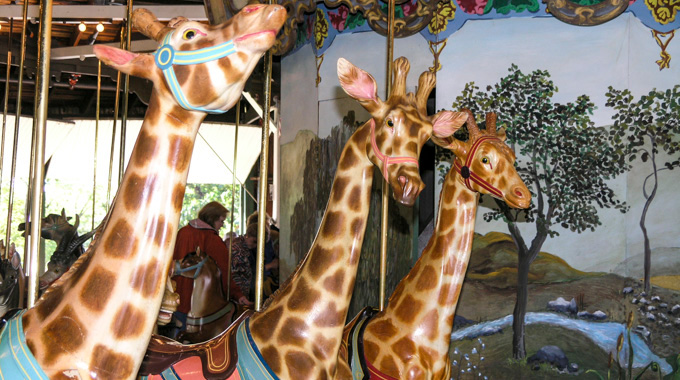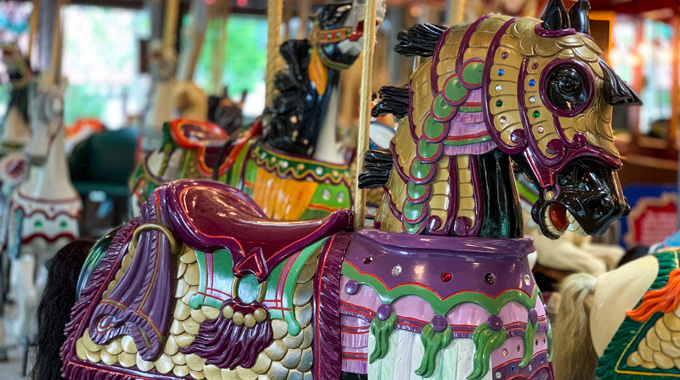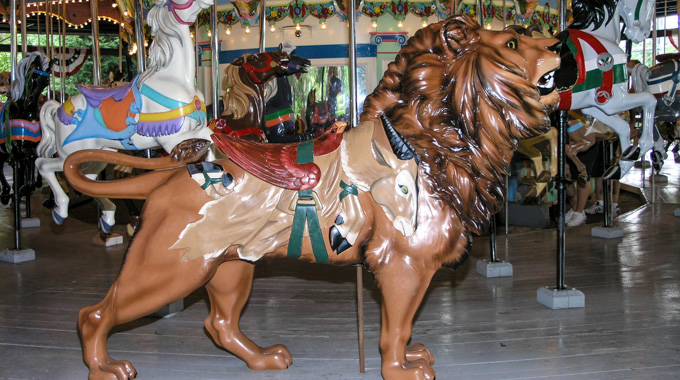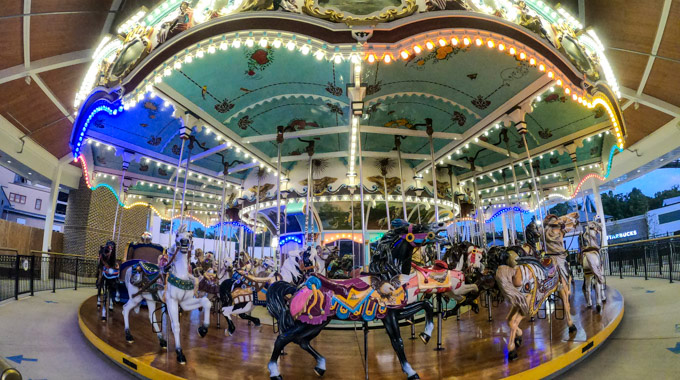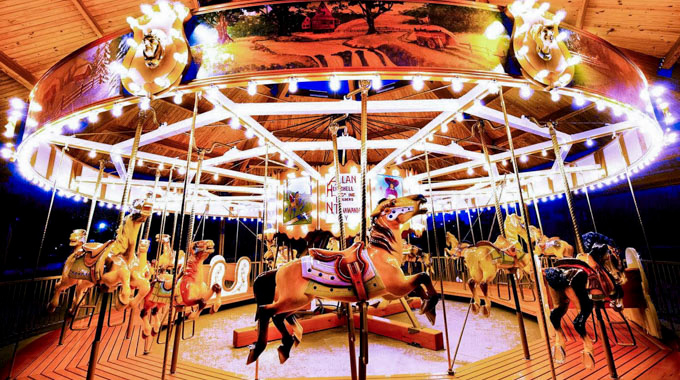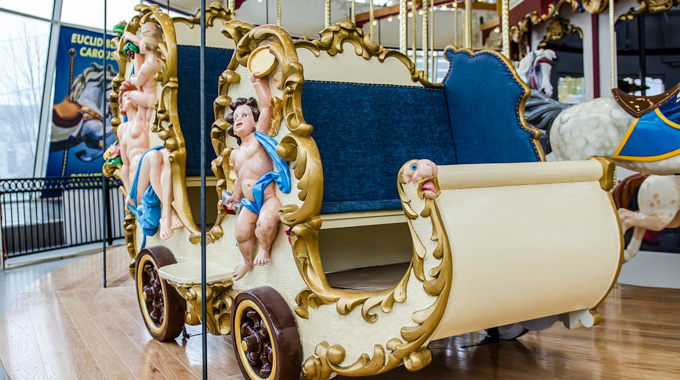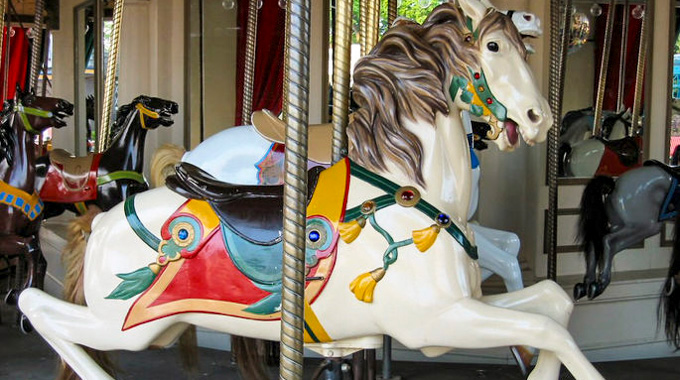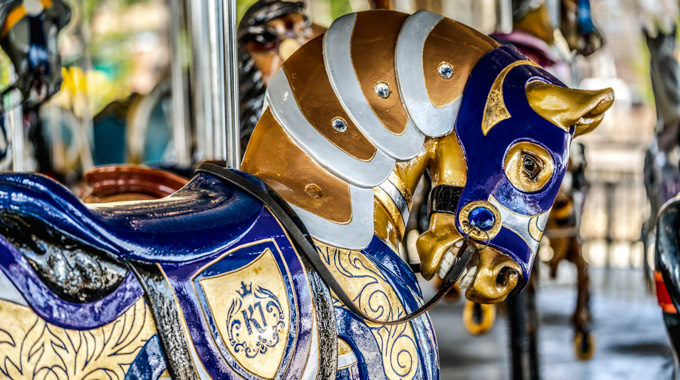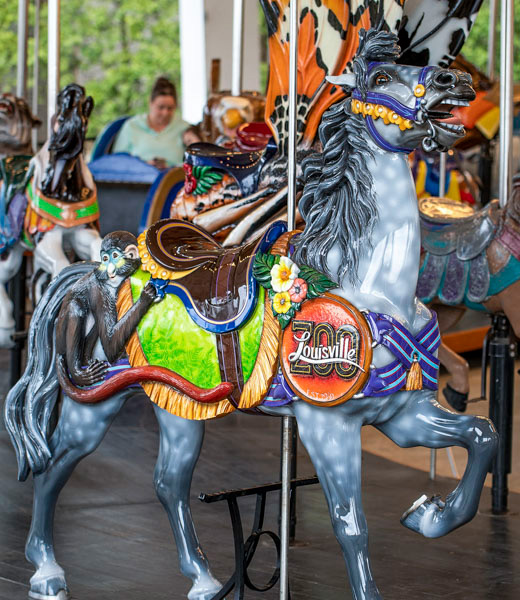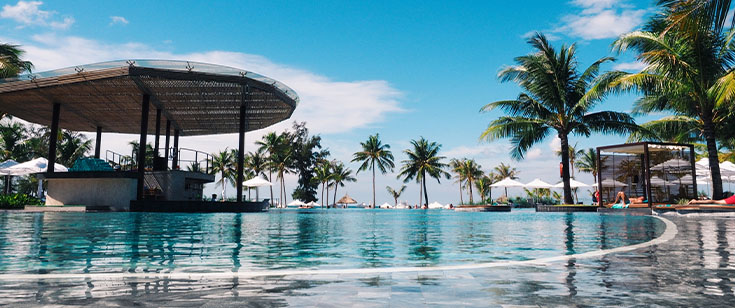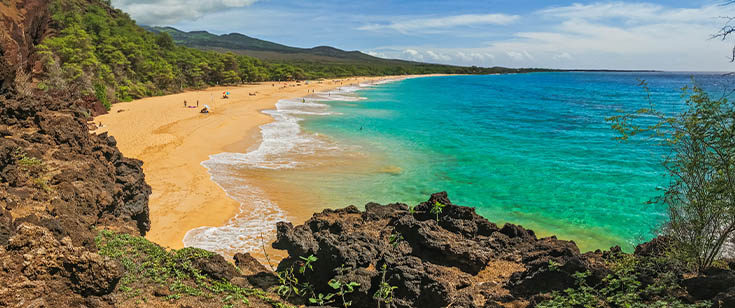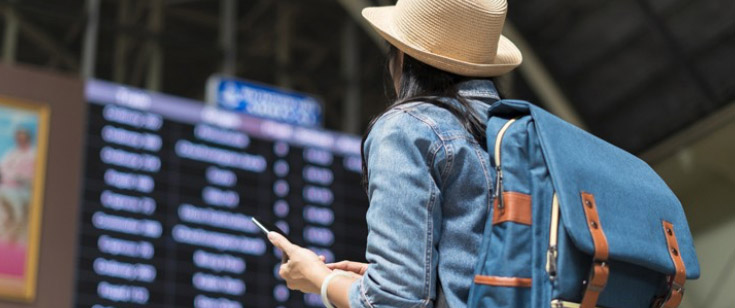For every century-old American icon that has been saved, thousands have been lost. This is especially true of carousels from the late 1800s and early 1900s—moving works of art with wooden horses and other animals hand-carved by European masters and decorated with exotic paintings.
Charming merry-go-rounds gave way over time to more exciting rides. Meanwhile, collectors so prized carousel horses that it made financial sense for amusement parks to sell the rides rather than continue the upkeep, especially during hard economic times.
“About 3,500 wooden carousels were built from the late 1800s until the early 1930s,” says Patrick Wentzel, president of the National Carousel Association (NCA). “Today fewer than 250 remain—precious pieces of history to be revered for their craftsmanship and beauty. An operating wooden carousel is one of a very few century-old artifacts you can touch and experience with a ride.”
Though vintage wooden carousel animals are preserved in private collections, the magical experience of riding a carousel is increasingly rare. Here’s a sampler of 12 locations where it’s still possible.


